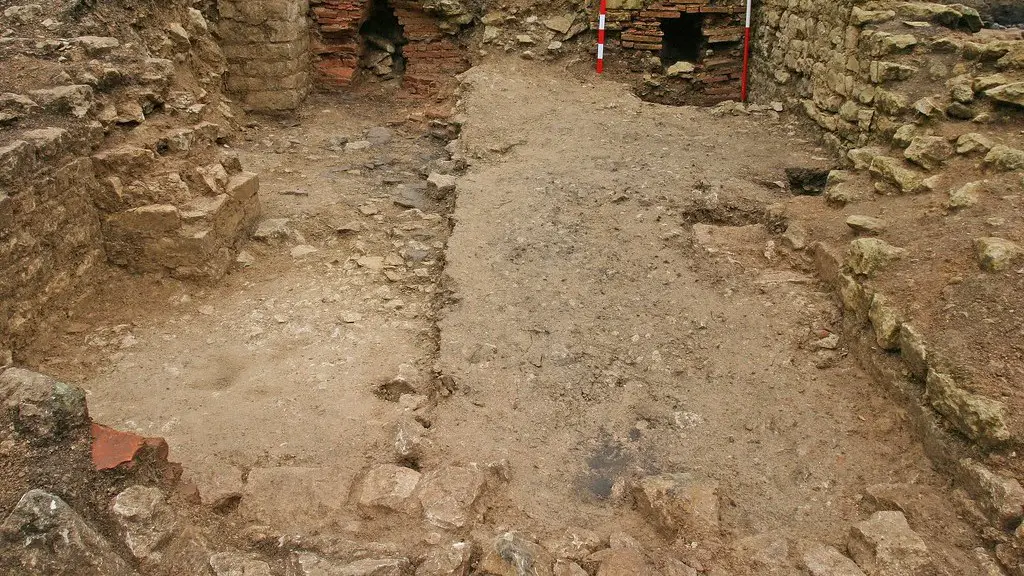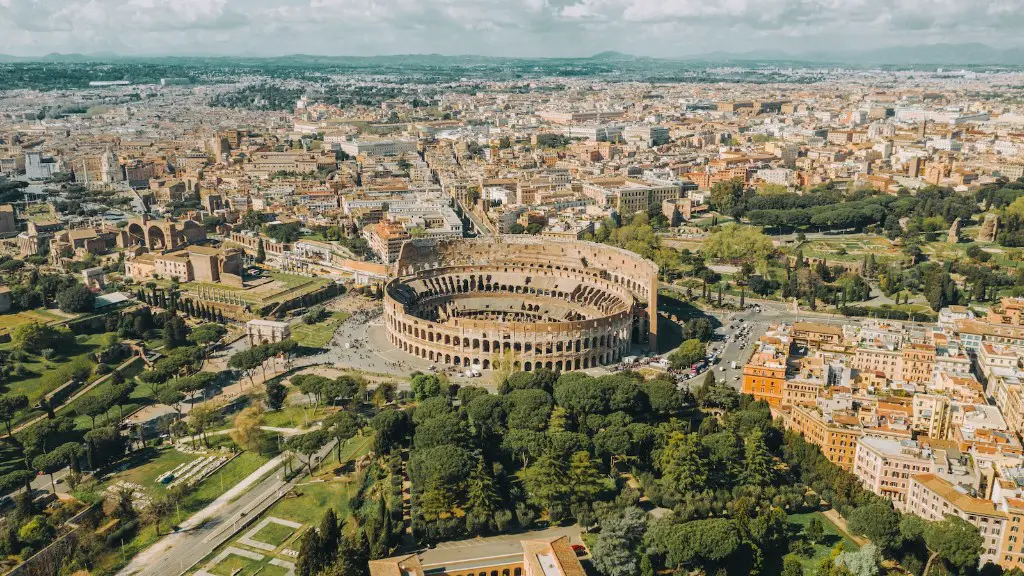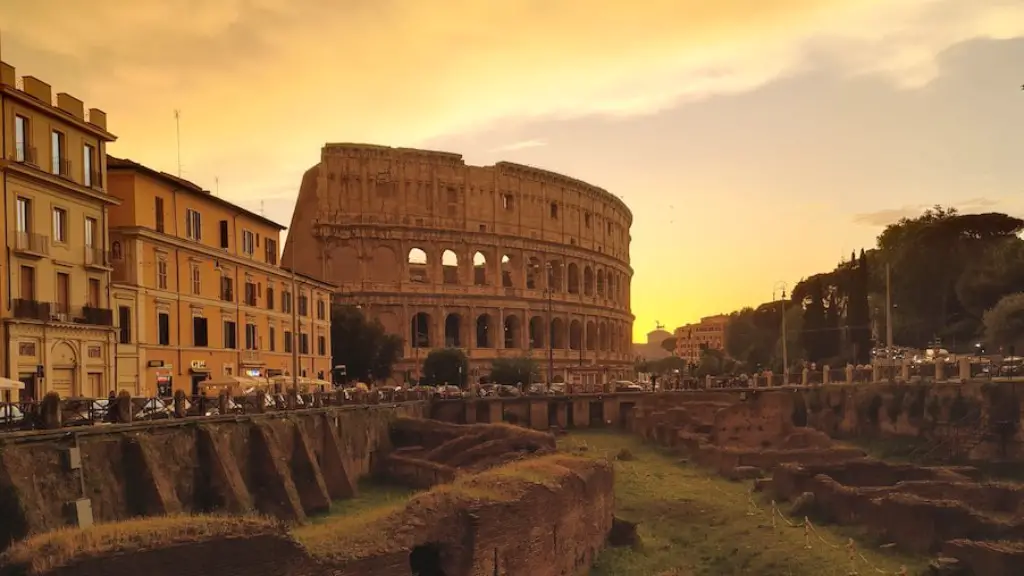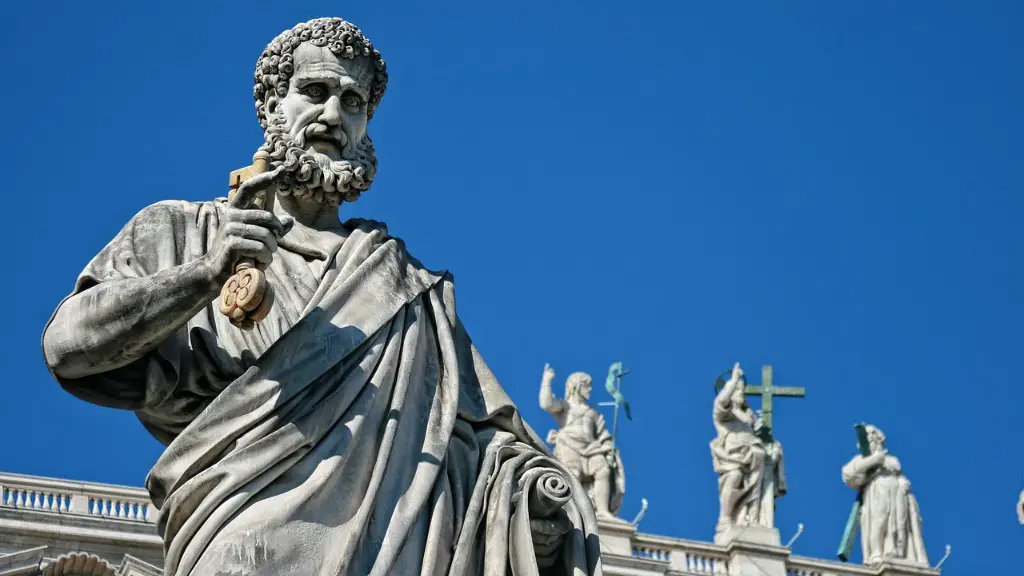Historical Background
Ancient Rome was the capital of the Roman Republic and later the Roman Empire. It was an immense metropolis with a population of around one million people, making it one of the largest cities of its time. The city was full of monuments, temples, museums, libraries and theaters, and was a major center of economic, political and cultural life. The city was home to many of the greatest works of literature, art, music and architecture from the ancient world.
The ruins of Ancient Rome have provided us with a glimpse of what the city may have been like thousands of years ago. In its heyday, the city was renowned for its grand public spaces, including the Forum, Colosseum and Baths of Caracalla. These all reveal the grand scale of Ancient Rome’s urban architecture, which was a result of the organization and ambition of the Roman Empire.
It is believed that, during the peak of the Roman Empire, Rome was a beautiful and awe-inspiring city. Visitors marveled at the sight of hundreds of marble facades, lavish gardens, and the grandeur of public monuments and sculptures. The forum provided a place for social gatherings, while other public squares were used to mark important occasions. The city was a bustling hub of culture and commerce, with a variety of activities taking place all over the city.
Geography & Climate
The physical environment of Ancient Rome was characterized by the hills and plains of Latium, the region where Rome was situated. Its central location, surrounded by hills and fields, made it a prime spot for settlement. Rome was also well-connected to the sea, which allowed for easy access to other parts of the Mediterranean.
The climate of the area was generally mild and pleasant. Summers were typically hot and dry, while winters were cold and wet. Rainfall was abundant, but the land around Rome was rarely flooded. This allowed Ancient Rome to become one of the most agriculturally productive cities of its time.
Farms and vineyards were common in the area, and Rome was able to sustain itself without needing to import food from other parts of the region. Taxes were levied on these agricultural products, providing the city and its people with substantial income.
Agriculture
Agriculture was an essential part of the Ancient Roman economy. The city was surrounded by farms and vineyards, which allowed it to be self-sufficient and was an important source of revenue for the Roman Empire. Agriculture was heavily regulated, with taxes and laws imposed to ensure fair prices and practices.
The technology and methods of Ancient Rome played an important role in the development of modern farming techniques. The Romans used foraging and crop rotation to maximize the productivity of their land, as well as livestock and dairy management. They were also the first to use fertilizers and crop rotation, which is still common today.
In addition to farming, Ancient Rome made use of aqueducts and irrigation systems to bring water to the city and its farms. This allowed them to make efficient use of the land and maximize the productivity of their crops. The technology used by the Romans played an important role in the development of modern water management systems.
Activities
Aside from its agricultural activities, Ancient Rome was a bustling center of entertainment, culture and commerce. People from all over the world would come to the city to attend plays, chariot races, gladiatorial games and religious festivals. There were also public baths, libraries and aqueducts, which provided for citizens’ leisure activities and needs. Trade was also important to the Roman economy, and merchants from all over the world would come to Rome to sell their wares.
Ancient Roman culture was marked by a strong sense of hierarchy and politics, and the city was divided into classes and social castes. The upper classes of Rome were often extravagantly wealthy and could afford luxurious lifestyles. The lower classes were often poor and made a living through manual labor. Despite these divisions, Ancient Rome was an incredibly diverse city, with citizens of many ethnicities, genders and religions living together in harmony.
Architecture
The architecture of Ancient Rome is renowned for its grandeur and innovative design. From public monuments like the Colosseum to private forums built by wealthy landowners, the city featured a range of structures. The city was also known for its use of marble and other costly materials, which was a marker of the wealth and power of the Roman Empire.
The city also featured a variety of engineering marvels, including roads, aqueducts, tunnels and bridges. These structures allowed for efficient trade and transportation, enabling the Romans to move goods, people and military personnel quickly and easily around the city and the empire. The engineering feats of Ancient Rome are still admired to this day for their complexity and durability.
Urban Design
Urban design played an important role in Ancient Rome and was largely responsible for the city’s grandeur. The city was divided into two distinct sections, the Servian Wall and the city proper. The Servian Wall enclosed the city and made it easier to defend. It also separated the city into two distinct parts, the domus and the insulae.
The domus were the homes of the wealthy and powerful, while the insulae were the homes of the lower classes. This division of the city into two distinct sections helped to maintain order and allowed for easier administration. Additionally, the city featured many public spaces, such as the Forum, where citizens and visitors could gather and socialize.
Sewage Systems
The Ancient Romans also developed sophisticated sewage systems to deal with water and sewage. These systems were essential for the health of the citizens and allowed for efficient waste management. The aqueducts built by the Romans also enabled them to move water from one place to another easily and efficiently.
The aqueducts were made from stone and concrete, and had a very sophisticated design. They allowed for the efficient movement of water and other materials. Additionally, the Romans developed a system of underground sewers which were used to collect and store sewage. This system was incredibly efficient and still exists in parts of Europe to this day.
The Impact of Ancient Rome
The impact of Ancient Rome can still be felt in today’s world. Its engineering marvels, culture and legacy have all had a lasting effect on our modern society. From its iconic buildings and monuments to its political systems and social structures, the legacy of Ancient Rome will continue to influence and inspire us for centuries to come.
The city’s cultural achievements still influence our modern society, from its art and literature to its architecture, engineering and philosophy. Ancient Roman law still governs many countries today, and the emperors who ruled Rome remain some of the most iconic figures in the history of the ancient world. Ancient Rome was a remarkable city and, despite its long absence, its legacy continues to reverberate in our modern lives.




